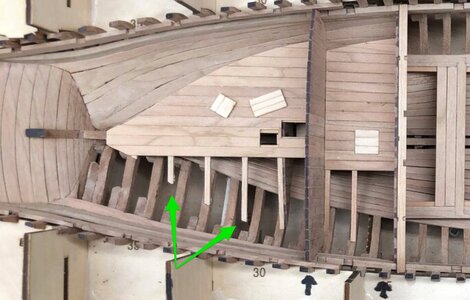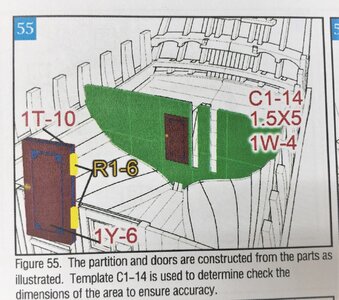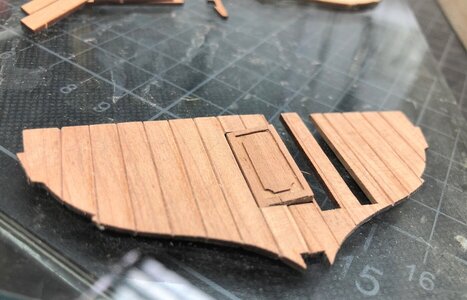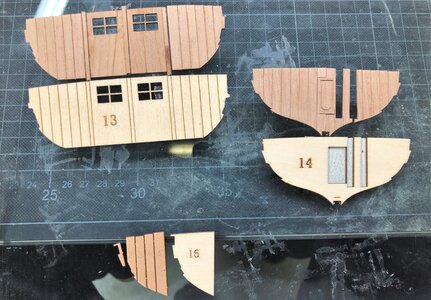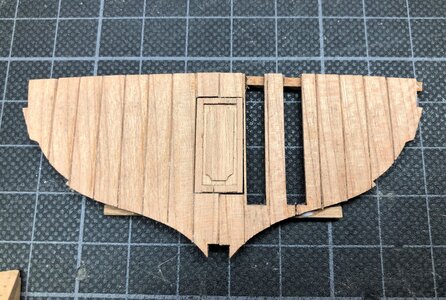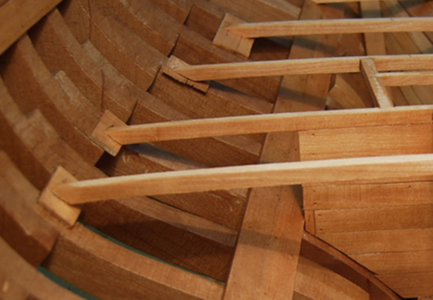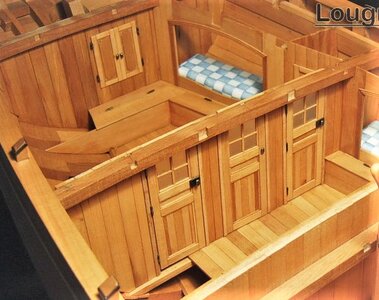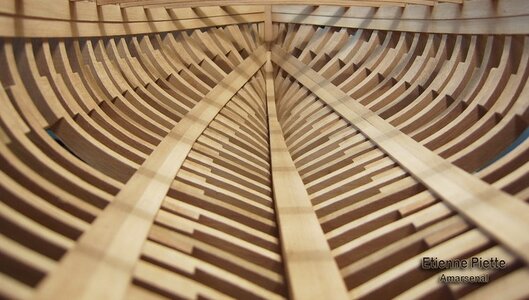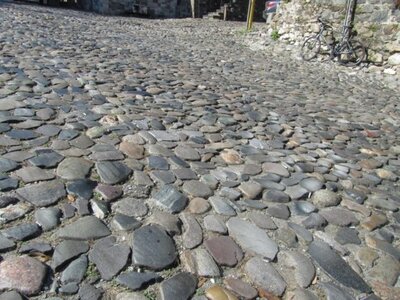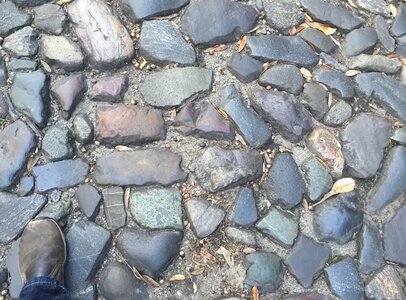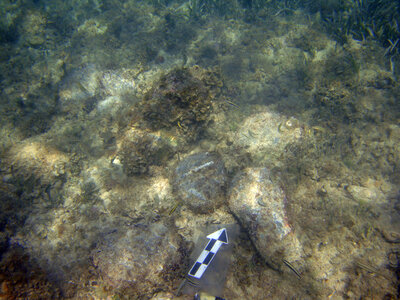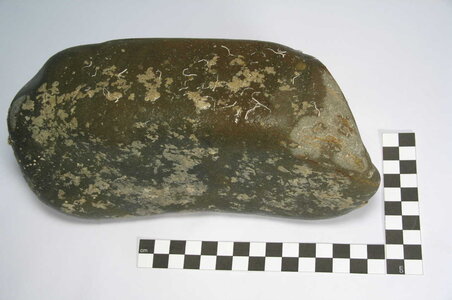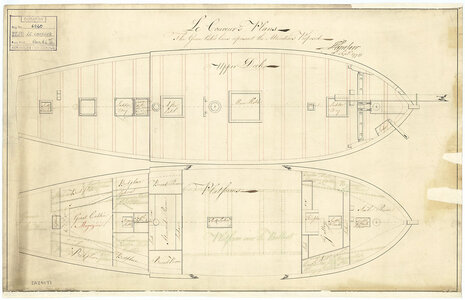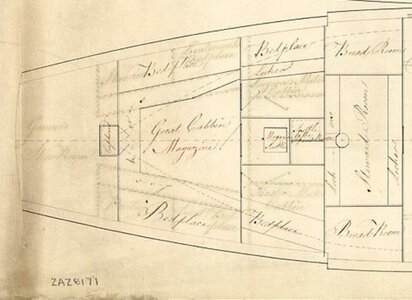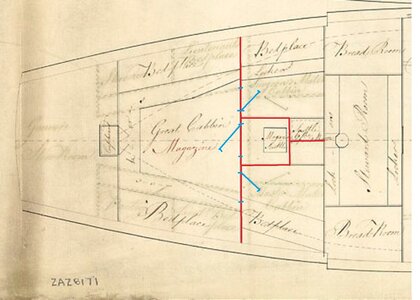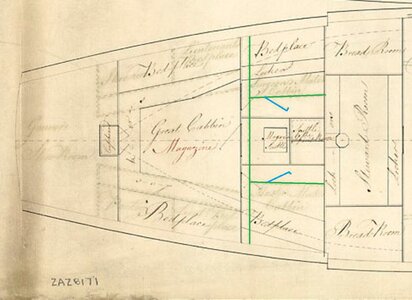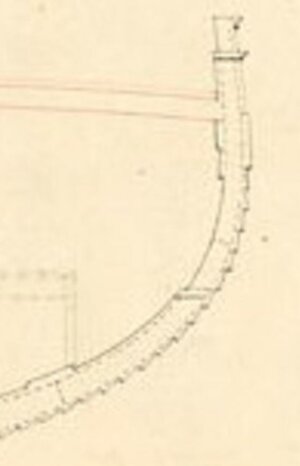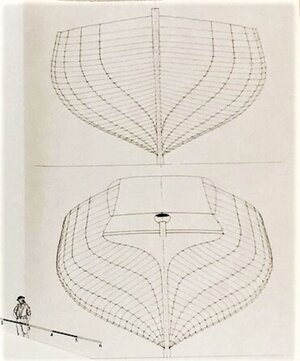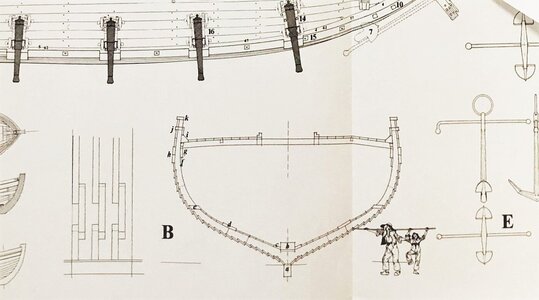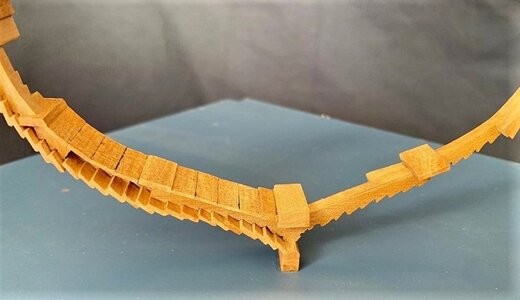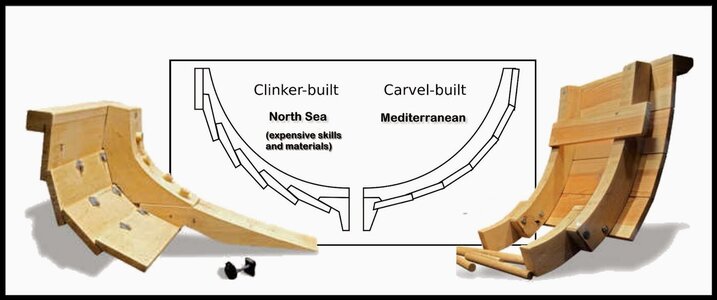Hallo Karl,
ja daran hatte ich mich auch erinnert, aber ich habe hierzu auch noch etwas weiter recherchiert.
Gérard schreibt ja (so wie ich sehe) nichts von der Größe der Steine, sondern dass die Steine nur im unteren Bereich waren und darüber, zwischen den Fässern eben das Brennholz etc.
In Kriegsschiffen wie dem 74-gunship wurde der Ballast dazu verwendet, die Stabilität des Schiffes zu verbessern und zu trimmen.
Vor allem bei Handelsschiffen wurde der Ballast auch noch zusätzlich dazu verwendet, die großen Unterschiede von beladenem und unbeladenem Schiff auszugleichen. Dieser Unterschied war bei Handelsschiffen ungleich größer als bei Kriegsschiffen.
yes, I remembered that too, but I also did some research on this.
Gérard does not write anything (as I see) about the size of the stones, but that the stones were only in the lower area and above, between the barrels just the firewood etc.
In warships like the 74-gunship, the ballast was used to improve and trim the ship's stability.
In the case of merchant ships in particular, the ballast was also used to compensate for the large differences between a loaded and an unloaded ship. This difference was much greater for merchant ships than for warships.
Ballast stone:
Als gutes Beispiel für Ballast stone ist heute noch in den Straßen von Savannah zu sehen. Dort im Hafen wurden die Schiffe die ohne Fracht ankamen, vom ballast stone befreit und dann mit Gütern beladen und sind zurück gesegelt. Zurück blieb der Ballast, welcher dort später zum Pflastern der Straßen verwendet wurde.
A fine example of ballast stone can still be seen in the streets of Savannah today. There in the port the ships that arrived without freight were freed from ballast stone and then loaded with goods and sailed back. What remained was the ballast, which was later used to pave the streets there.
View attachment 199421 View attachment 199427
Savannah was established as a British settlement in 1733 and became the first city in the colony of Georgia. A combination of British agricultural technologies and African slave labour made Savannah one of the most important ports for the shipping of cotton, rice and sugar to the northeast of the United States and to Europe during the 18th and 19th century. Most of the ships went in ballast to Savannah and at arrival they dumped their ballast stones along the Savannah River shoreline. This means that ballast stones were arriving in substantial numbers to Savannah in the early 1800’s. The total amount of ballast stones found in the waterfront area today has been estimated to exceed 800.000 tons. For the city the stones became an inexpensive, durable, and fireproof building material.
www.georgialifetraces.com
also here the ADMAT wrecks with ballast stones - the black/white marks are 5cm
View attachment 199422

www.admat.org.uk
or here:
Site 35F
The available evidence indicates that site 35F was a heavily armed English merchant vessel engaged in West African trade that was lost between the middle and late 17th century (1650-1690). Research further suggests the site likely represents the first wreck of a Royal Africa Company ship discovered worldwide.
Artifact Description:
Site 35F can be characterized as the poorly preserved remains of a heavily disarticulated wooden hull associated with an extensive set of cannon, the existing remains of which are a very small part of its original cargo. No defined ballast mound or cluster exists, although stones underlying the wooden hull, and extending beyond the limits of the surviving hull structure, suggest that the original ballast concentration has been flattened and scattered by trawl drags. The ballast itself consists of rounded, cobble-sized stones 10-20cm in diameter on average. One typical example recovered and featured here, measures 21.5 x 10.0 x 7.9cm.
View attachment 199426
Daftar dan bergabung sekarang bersama slot zeus88 untuk memulai petualangan mencari petir x500 dari dewa zeus slot gacor dan menangkan banyak jackpot slot88 dengan berbekal informasi RTP live terakurat dengan winrate paling tinggi di Indonesia.

www.odysseysvirtualmuseum.com






